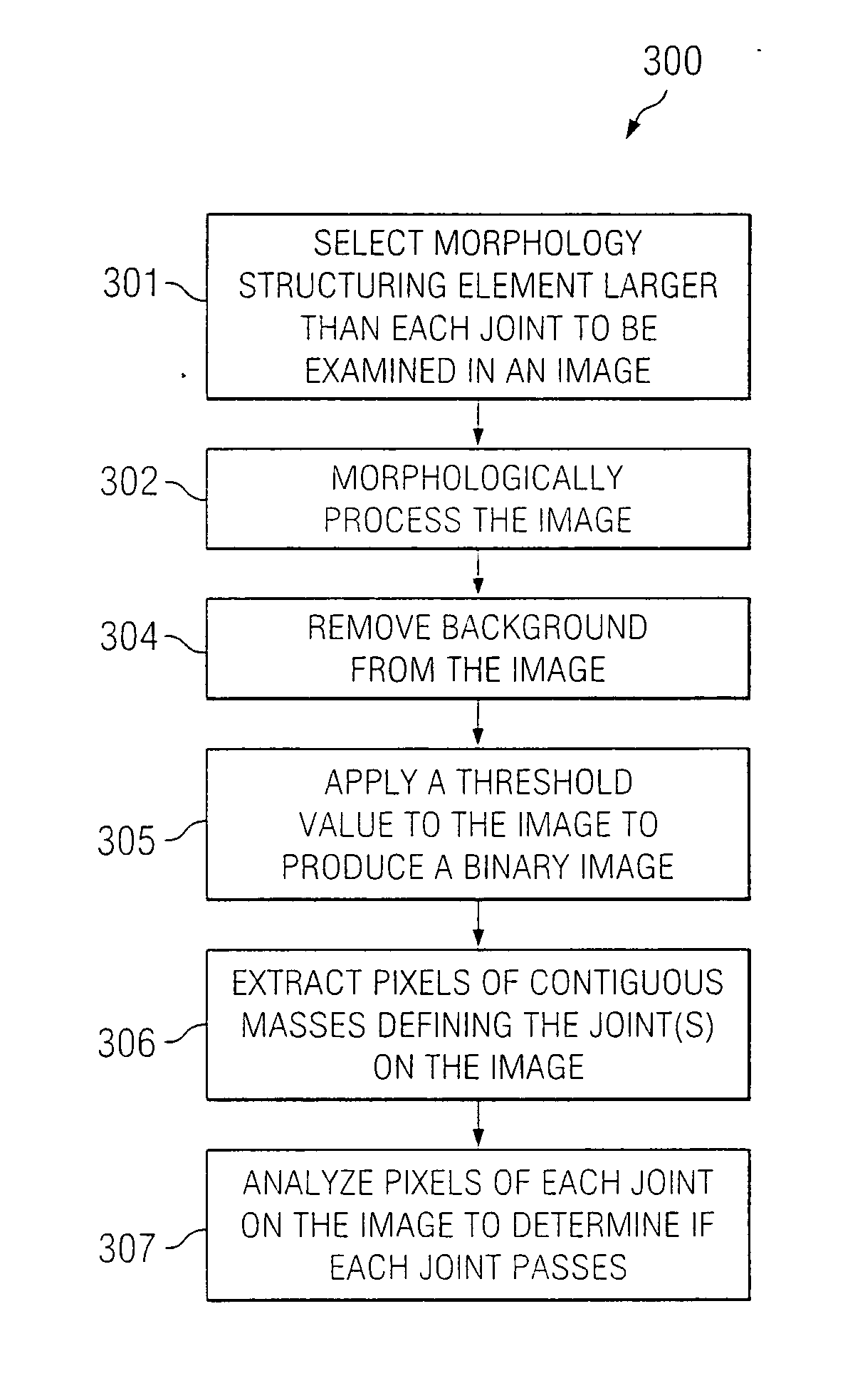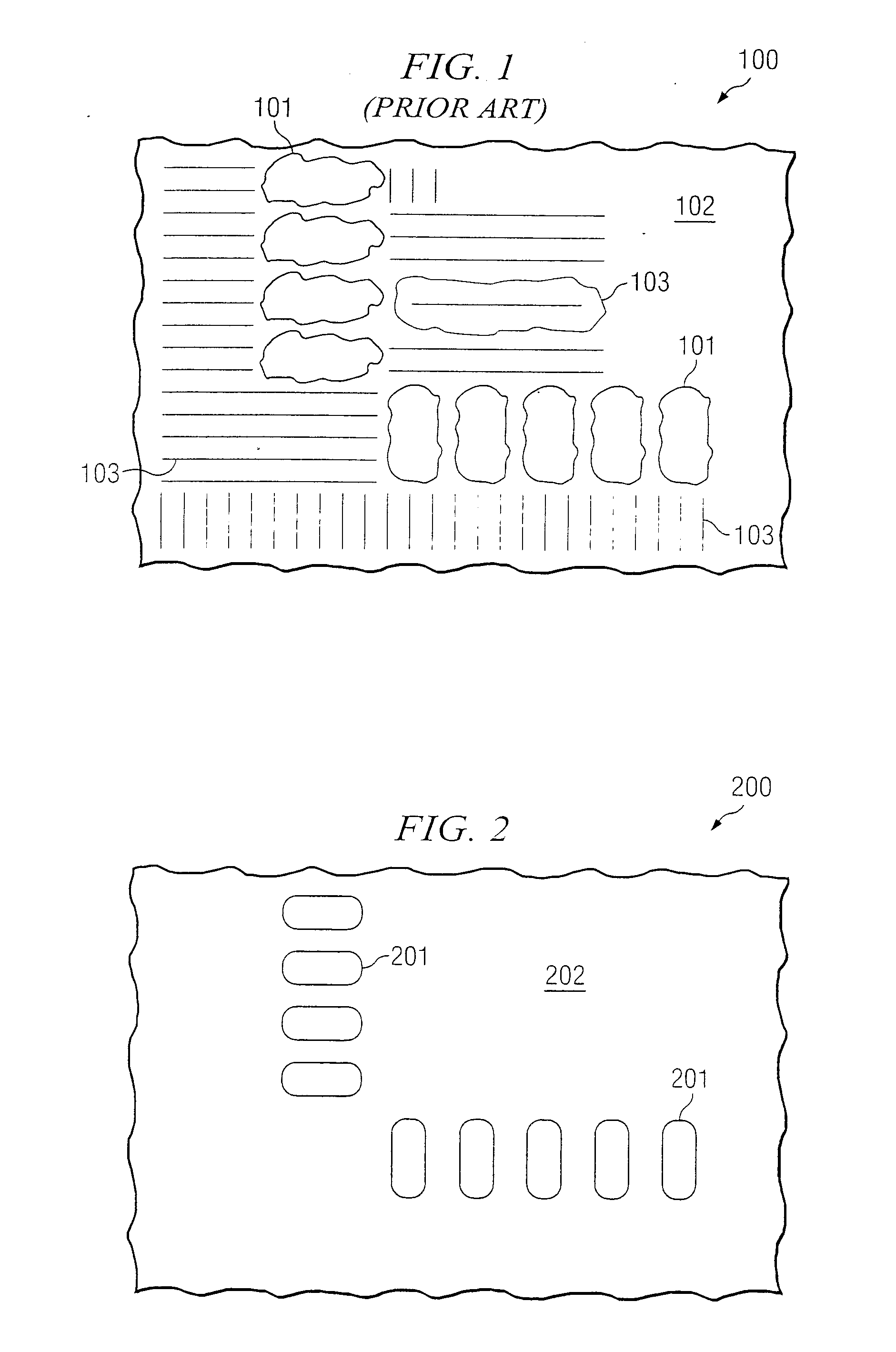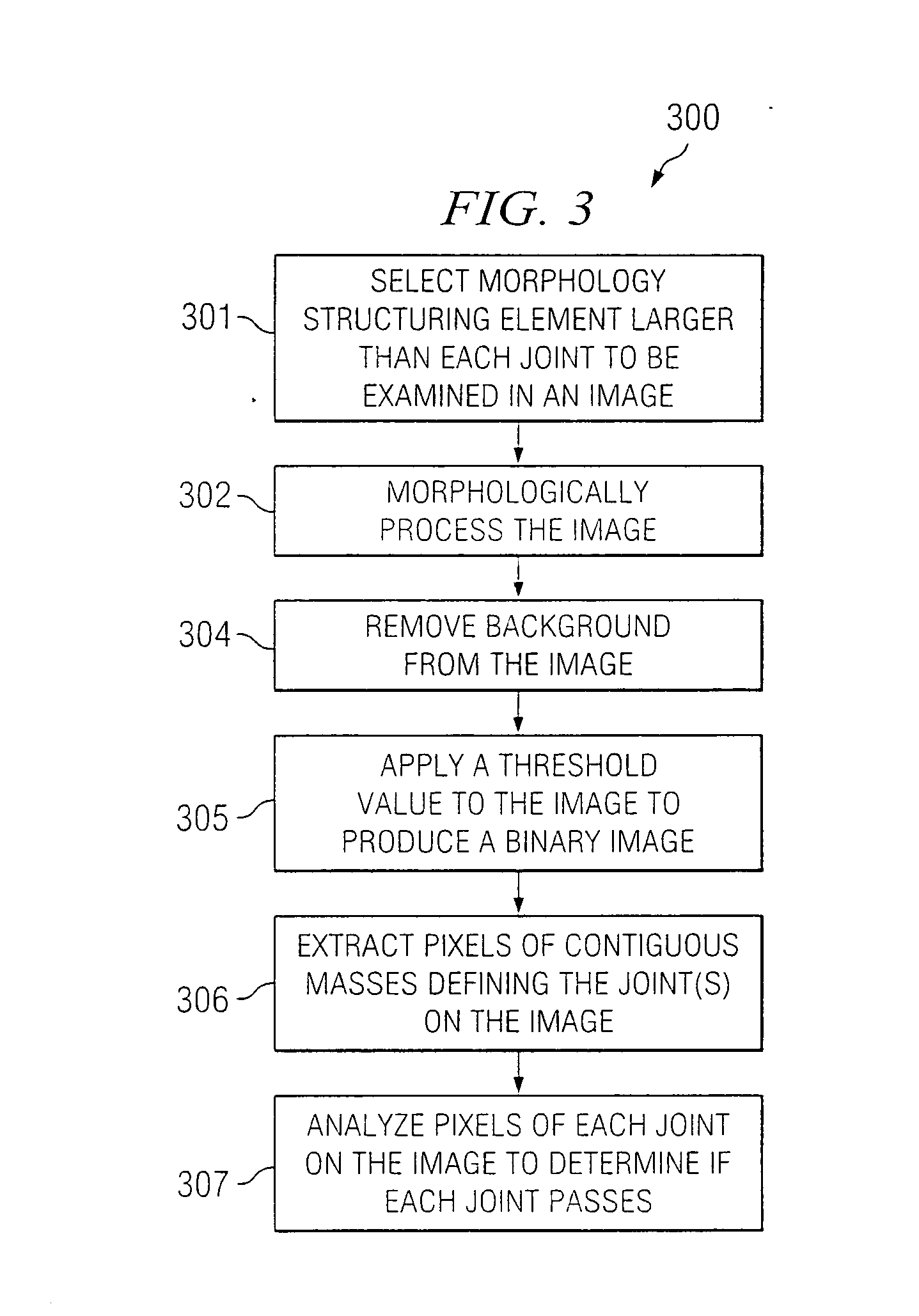Laminograph deshadowing
a laser and morphological operator technology, applied in the field of in-sight inspection of images, can solve the problems that the explicit locator algorithm may become unnecessary, and achieve the effect of stable and well-clusted features and rapid evaluation of morphological operators
- Summary
- Abstract
- Description
- Claims
- Application Information
AI Technical Summary
Benefits of technology
Problems solved by technology
Method used
Image
Examples
embodiment 400
[0046]FIG. 4 is a flow chart of power-of-two structuring element embodiment 400, employing a flat-bottomed rectangular structuring element. A square structuring element side dimension (D) is chosen at box 401 and the dimension achieved (d) by the dilation is initially set to one at box 402. If it is determined at box 403 that the achieved dimension is less than the structuring element side dimension chosen then a new achieved dimension (dnew) is set equal to min(2d, D) at box 404. At box 405 a shift amount (s) is set to be equal to the new achieved dimension, less the achieved dimension (s=dnew−d). If grayscale image array, A, is very large, such that edge effects are not a concern, the operation:
A(1)←max(A,A1) (12)
may be performed at box 406, where A1 denotes A shifted to the right one pixel, i.e.:
aij(1)=max(aij,ai,j−1) (13)
this is followed by shifting the result down against itself and applying the maximum operation at box 407:
A(2)←max(A(1),A(1)1) (14)
where this is unde...
embodiment 500
[0052] Alternatively, as shown in FIG. 5, illustrating a second square, flat-bottomed structuring element embodiment 500 of the present invention, at each step the image may be shifted, both left and right and up and down, against itself. This doubles the computational work at each step for nearly equivalent structuring element widths, but eliminates one step of the mathematical morphology processing task. A square structuring element side dimension (D) is chosen at box 501 and the dimension achieved (d) by the dilation is initially set to one at box 502. At box 503 a shift amount (s) is set to be equal to one. If it is determined at box 504 that the achieved dimension (d) is less than the structuring element side dimension (D) chosen, then the max of the image is taken, shifting the image to the right by the shift amount (s) at box 505. Then the max of the image is taken, shifting the image left by the shift amount (s) at box 506. Next, the max of the resulting image is taken at bo...
embodiment 600
[0060] With a flat structuring element sharp boundaried zones may be caused by small bright objects. Embodiment 600 of the present invention, as flow charted in FIG. 6, ameliorates this effect. The transitions can be greatly softened by averaging the dilated image with an image, which has been dilated employing a structuring element half the width. This approximates the effect of a rounded structuring element. At box 601, an SE is selected that is wide enough to bridge solder joints, and that is sloped or terraced appropriately to let its influence fade out, to avoid discontinuity artifacts. The image is dilated or closed using the structuring element at box 602. The original image is subtracted form the resulting image at box 603.
[0061] A rounded-bottom structuring element embodiment, using dilation or closing, serves to produce an estimate of the background signal level of the circuit board surrounding solder joints. The variability of background level across the image comes from ...
PUM
| Property | Measurement | Unit |
|---|---|---|
| sizes | aaaaa | aaaaa |
| power | aaaaa | aaaaa |
| area | aaaaa | aaaaa |
Abstract
Description
Claims
Application Information
 Login to View More
Login to View More - R&D
- Intellectual Property
- Life Sciences
- Materials
- Tech Scout
- Unparalleled Data Quality
- Higher Quality Content
- 60% Fewer Hallucinations
Browse by: Latest US Patents, China's latest patents, Technical Efficacy Thesaurus, Application Domain, Technology Topic, Popular Technical Reports.
© 2025 PatSnap. All rights reserved.Legal|Privacy policy|Modern Slavery Act Transparency Statement|Sitemap|About US| Contact US: help@patsnap.com



